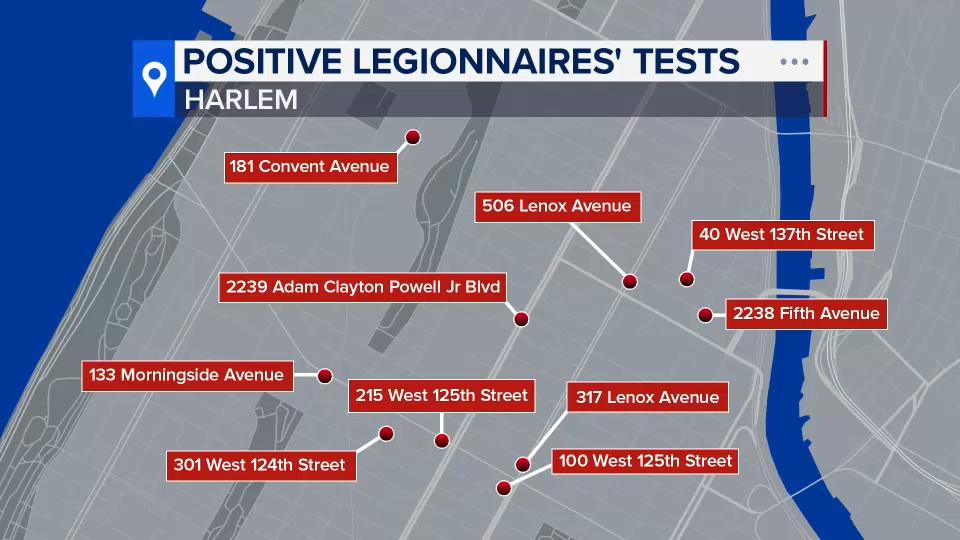Escalating Legionnaires’ Disease Incident in Harlem Nears 100 Cases
The Harlem neighborhood of New York City is currently facing a rapidly expanding outbreak of Legionnaires’ disease, with confirmed infections approaching the 100-case mark. To date, 15 individuals have been admitted to hospitals exhibiting severe respiratory symptoms associated with this bacterial infection. In response, health authorities have launched comprehensive environmental assessments targeting residential and commercial properties, particularly scrutinizing cooling towers and water distribution systems as potential sources of contamination.
Highlights from the ongoing response include:
- Systematic water sampling and Legionella testing at a dozen sites throughout Harlem
- Issuance of public health alerts advising residents to promptly seek medical evaluation if symptoms arise
- Enhanced coordination between municipal health agencies and property managers to expedite remediation efforts
| Indicator | Current Figures | Figures Last Week |
|---|---|---|
| Confirmed Cases | 97 | 85 |
| Hospital Admissions | 15 | 12 |
| Sites Inspected | 12 | 8 |
Severity and Demographics of Hospitalized Patients Highlight Outbreak Impact
The surge in Legionnaires’ cases has resulted in a notable number of hospitalizations, with several patients requiring intensive care. The majority of those affected belong to high-risk categories, including seniors, individuals with chronic respiratory illnesses, and people with compromised immune defenses. This outbreak’s hospitalization rate surpasses typical Legionnaires’ disease patterns, suggesting either a more virulent strain or environmental factors exacerbating transmission in this urban setting.
Patient data reveals the following trends:
- Age Group: Predominantly between 55 and 80 years old
- Preexisting Health Issues: Conditions such as chronic obstructive pulmonary disease (COPD), diabetes, and heart disease
- Hospital Stay Duration: Average length of 7 to 10 days, with some requiring ventilator support in intensive care units
| Patient Characteristic | Percentage | Additional Notes |
|---|---|---|
| Patients Aged 65 and Older | 60% | Higher risk of severe illness |
| Patients with Comorbidities | 75% | Increased complication rates |
| ICU Admissions | 20% | Critical respiratory intervention required |
Investigation into Sources and Implementation of Control Strategies
In an effort to trace the origin of the Legionnaires’ outbreak, public health teams are conducting meticulous inspections of water infrastructure within affected buildings. Emphasis is placed on cooling towers, water storage tanks, and plumbing systems, which are common reservoirs for Legionella bacteria. Utilizing advanced microbiological testing and environmental assessments, city health officials and environmental specialists aim to identify contamination hotspots and evaluate contributing risk factors.
To prevent further transmission, authorities have initiated several containment protocols, including:
- Thorough disinfection and maintenance of cooling towers and water systems
- Distribution of health advisories to residents and property managers
- Ongoing water quality monitoring to ensure adherence to safety regulations
Officials stress the critical role of community cooperation and urge anyone experiencing symptoms such as persistent cough, fever, or difficulty breathing to seek medical care without delay.
| Containment Measure | Current Status | Projected Completion |
|---|---|---|
| Cooling Tower Evaluations | In Progress | End of This Week |
| Water System Sanitization | Ongoing | Within 3 Days |
| Public Health Alerts Issued | Completed | N/A |
| Continuous Water Surveillance | Scheduled | Ongoing |
Community Guidance on Prevention and Safety Practices
Health authorities are advising Harlem residents and local businesses to stay alert amid the expanding Legionnaires’ disease cluster. Preventative actions focus on minimizing exposure to contaminated water sources, including:
- Regular flushing of infrequently used water outlets to prevent bacterial accumulation
- Routine maintenance and certification of cooling towers and HVAC systems
- Application of approved water treatment techniques to inhibit Legionella proliferation
- Prompt medical consultation for symptoms such as cough, fever, or shortness of breath
Community health officials emphasize awareness and swift response as key to reducing new infections. The table below summarizes recommended safety measures tailored to various settings:
| Setting | Recommended Precautions |
|---|---|
| Residential Complexes | Monthly inspection of water heaters; weekly flushing of taps |
| Commercial Buildings | Quarterly certified inspections of cooling towers |
| Medical Facilities | Strict protocols for water quality monitoring and control |
| Public Areas | Regular cleaning and disinfection of ornamental fountains and water features |
Summary and Next Steps
As the Legionnaires’ disease outbreak in Harlem approaches 100 confirmed cases with 15 hospitalizations, local health authorities remain committed to identifying the contamination source and implementing effective control measures. Residents are urged to adhere to public health recommendations and report symptoms promptly. Ongoing updates will be shared as investigations progress and additional data becomes available.













